Over the last three months, I decided to finally pick up, read, and participate in Julia Cameron’s “The Artist’s Way.” A book I’m sure quite a bit of you have heard of over the years.
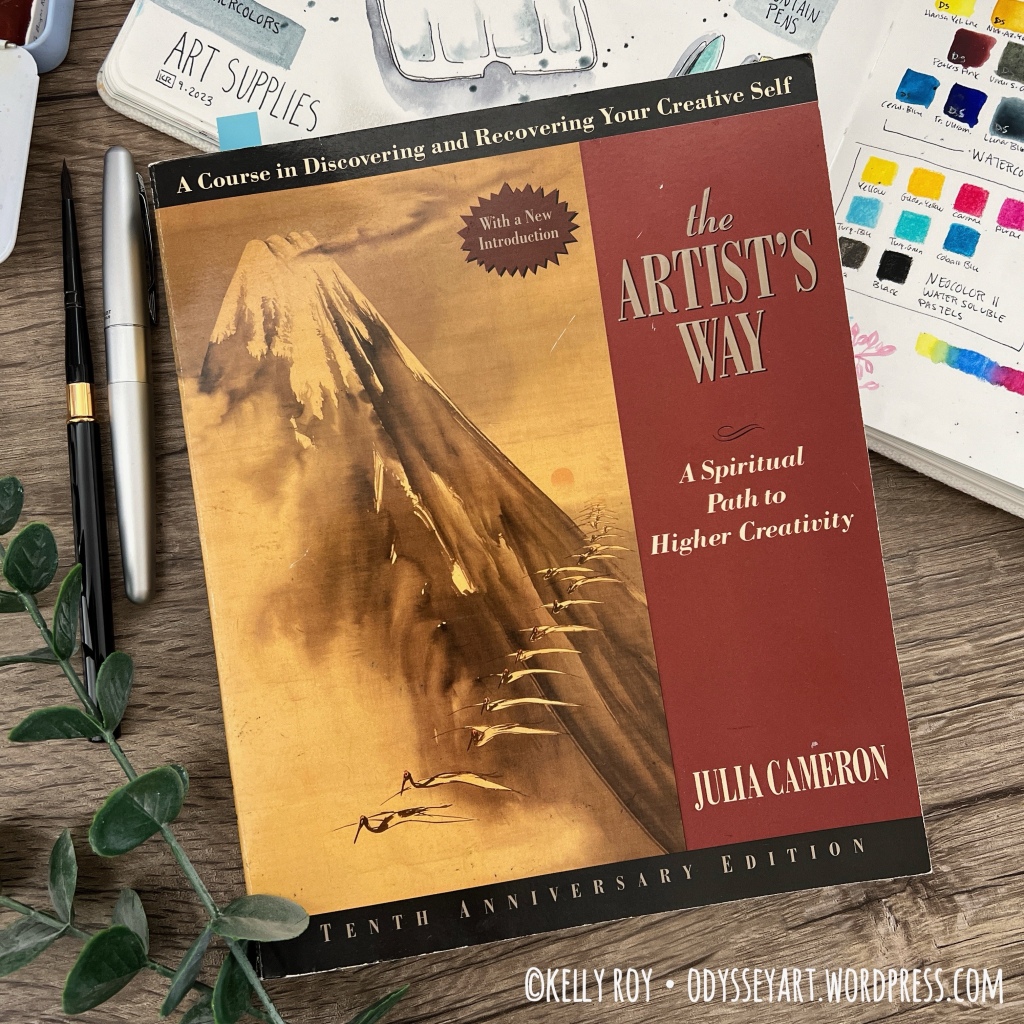
For some reason, this book has been hitting a new kind of popularity out in the social media-verse. I’ve seen lots of YouTubers talking about doing it or thinking of doing it, etc. After seeing a few of these experiences shared, I remembered I had my own copy of “The Artist’s Way” sitting on my bookshelf. Long forgotten and gathering dust.
I first picked this book up 16 years ago. Good grief, it’s crazy even saying it’s been that long, knowing all that has come to pass during that time frame. A divorce, a move, a new job, and my diving into living a more creative life.
The first time I started “The Artist’s Way”, I only got about three weeks in, then I stopped. For good reason. My life got turned upside down by my ex-husband’s alcoholism. I don’t talk much about my personal life on here, since, really, this is supposed to be an art blog, not an autobiographical accounting of my life.
But after having made it all the way through “The Artist’s Way” this time, 16 years later, I’ve found there’s no arguing that our creative lives are deeply intertwined with our personal lives. We’re human beings, after all. Not robots.
16 years ago, there just was no way I was in any sort of a place to work with “The Artist’s Way”. I was grappling with how to survive around active alcoholism in my life. In hind sight, I feel like my Higher Power was watching out for me and said “No… I’ve got a different path for you right now. We’ll come back to ‘The Artist’s Way’ later.”
I think the timing ended up being just right, because through those years with the alcoholic and eventual divorce from him, I found myself a support network that guided me to find and define a God of my understanding that I could trust and to whom I could give over the care of my life.
That Julia Cameron references 12-step recovery often in the pages of “The Artist’s Way” is quite convenient. I found it easy to entertain her gentle nudges to put my creativity into the hands of a power greater than myself.
In short, the “woo-woo-ness” of this book that many people often complain about didn’t bother me at all. I’m comfortable with my spirituality, and have come a long way from having my hackles rise anytime someone mentions the “G” “O” “D” word around me.
Believe me, I was very adverse to discussions about God in the past, immediately dreading that someone was going to tell me I was going to go to hell because I’m a terrible sinner at my core. This shaming would then immediately be followed up with an announcement that I could find salvation so long as I joined this person’s religion. There’s no faster way to turn me off from something than to tell me I’m a horrible person at my core.
I confirm, there is plenty of discussion about “God” in this book. But then, what should you expect when you pick up a book with a subtitle that says “A Spiritual Path to Higher Creativity”?
Julia does not threaten you with damnation, however. She doesn’t tell you her understanding of God is what you should believe. She gently guides you to define what your own Higher Power is supposed to be. And for many of us, that Higher Power isn’t some jealous, vindicitve deity up in the sky. It could be the power of the universe, nature, love, etc. And absolutely, that Higher Power can instead be loving and supportive.
I can honestly say that this book managed to add to my ever-evolving relationship with God, and in good ways. That was an appreciated, unexpected perk.
So now having had this experience of working all the way through this book, I just wanted to touch on a couple common misconceptions about this book.
Often when you see people’s reviews about doing “The Artist’s Way” they magnetize to and get stuck on talking about doing the Morning Pages and the (oft-dreaded) Artist’s Dates.
This 12-week course is way, way more than just writing three pages in your notebook every morning and fretting about what your next Artist’s Date is supposed to be. People tend to hint that those exercises are the true work in the book, but I disagree.
Each week, Julia dives into further and further descriptions, details, and exercises that help you look at yourself and your creativity as a whole, rather than as a separate part of you.
There are many, many more exercises in the book beyond the Morning Pages and Artist’s Dates, where you are encouraged to dive really deep into what makes you tick and what subconscious things, people, behaviors, etc. keep you shying away from spending time being creative.
If you think you can skip all the reading and just dive into doing Morning Pages and Artist’s Dates and reap the benefits of the book that way, you’ll be missing out on a lot.
I blocked out out entire Sunday mornings to dedicate to reading the start of each week’s chapter, and took the time to answer her many questions and participate in her detective work and other suggested exercises throughout the weeks.
One surprising exercise from Week 2 was to list 10 simple changes I’d like to make for myself. (Bonus is that some of these things can absolutely become a future Artist’s Date.) I wrote some things down like “declutter”, “rearrange my bedroom”, and “honor my commitment to have lunch with my parents.” At the end of that list, she tells you to pick one item and do it. Well, ta-da – I had lunch with my parents. And finally, not long after finishing the book, I also got around to rearranging my bedroom.
This book really is about taking action. Tosha Silver writes a suggestion to her readers in her wonderful book “It’s not Your Money”. I’m paraphrasing here, since I have it on Audiobook and it’s difficult to pinpoint the chapters that way, but she says something along the lines that her book is about taking action. Sure, you can choose to just read it and be like a group of people safely sitting on the sidelines, sunning themselves on the side of a riverbank. But you’ll get more out if it if you take action, dive in, and frolic in the cool waters.
I’m looking for positive change in my life, always, and I recognize I need to do the footwork. I can’t just sit back and expect the universe to do everything for me. God, the Creator, the Universe, whatever you want to call it/her/him desires participation. I read a funny quip in another piece of literature not long ago where someone complimented a person on their garden, saying “Wow, God has done such wonderful work on your garden!” The gardener retorted “Really? You should see what it looks like if I only leave it up to God.”
I’m looking to participate in my life, and that means doing all the exercises in “The Artist’s Way”, beyond the Morning Pages and Artists’s Dates. Those are critical, too, but not the backbone of the book, in my humble opinion. If you want to get everything out of what the book has to offer, don’t think you can shortcut it by only doing the writing and taking little field trips.
Get brave and read her essays in relation to the additional work she asks you to do. Sit down and write your answers to the difficult questions. One of my favorites is “what’s your favorite creative block” from Week 4. Yes, we have “favorite” negative behaviors. (For me, that block is sitting and watching television or YouTube for far too many hours of my day. It’s a small wonder that I end each day wondering where the day went and why I feel like I never have any time to take care of important things.)
Did I become creatively unblocked? I’m not so sure about that. But then I’m an artist and practice art a lot of the time, and to be honest, a lot of the discussion in this book seems geared a little bit more towards people who pretty much never practice art for all the reasons she lists: “it’s unpractical”, “there’s no time”, “I’m not good enough”, etc.
I did manage to squeeze in a few illustrations and paintings while actively working through the book. I even shifted gears and made some Coptic stitch sketchbooks for a change of pace. Part of what kept me going there, however, was hosting and participating in World Sketchbook Month. I honestly may have done less were it not for WSBM.


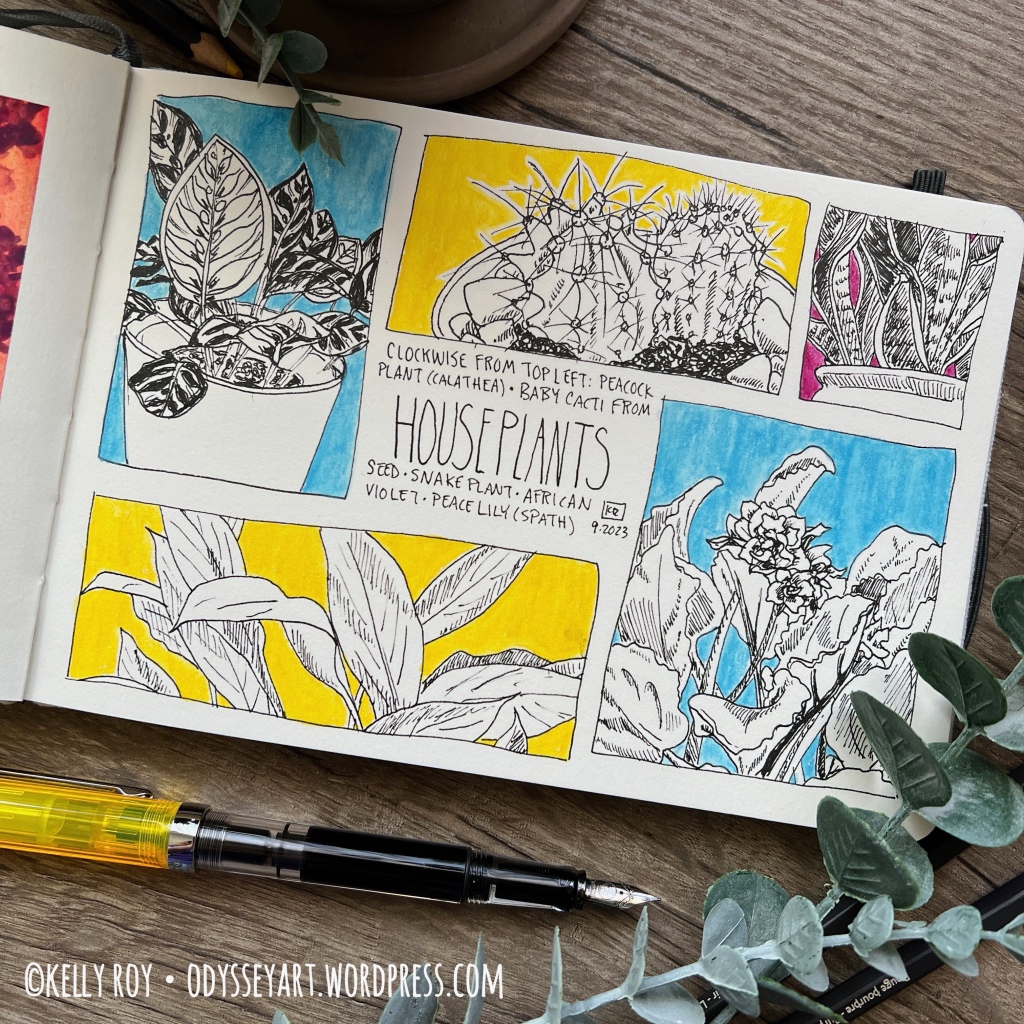


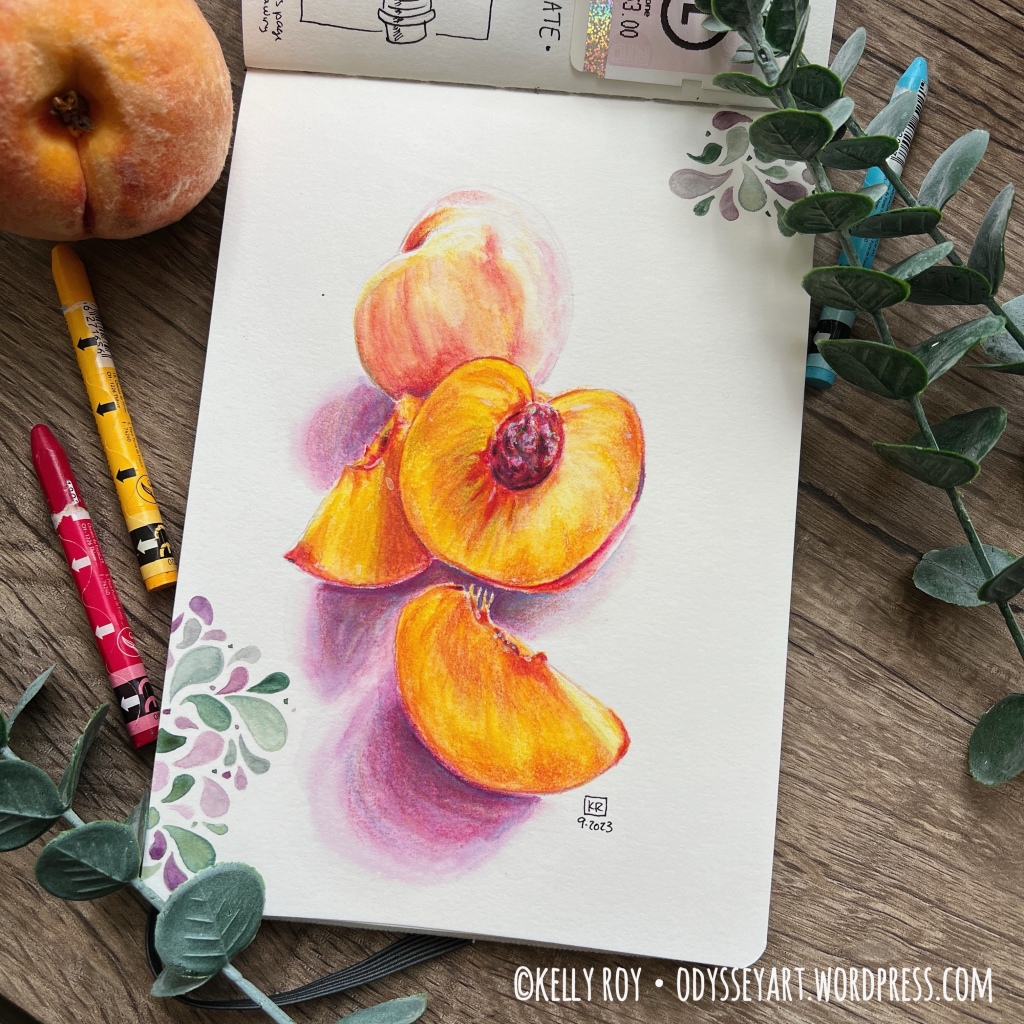
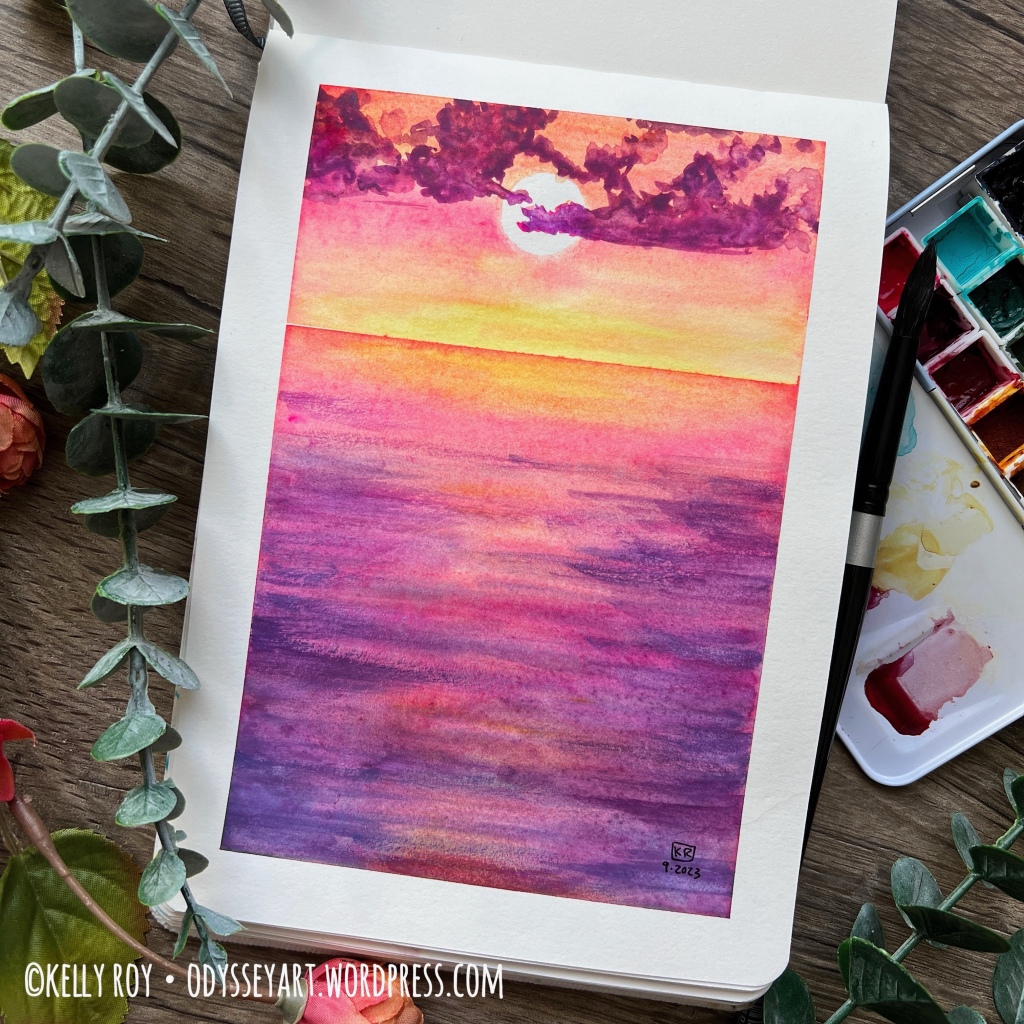
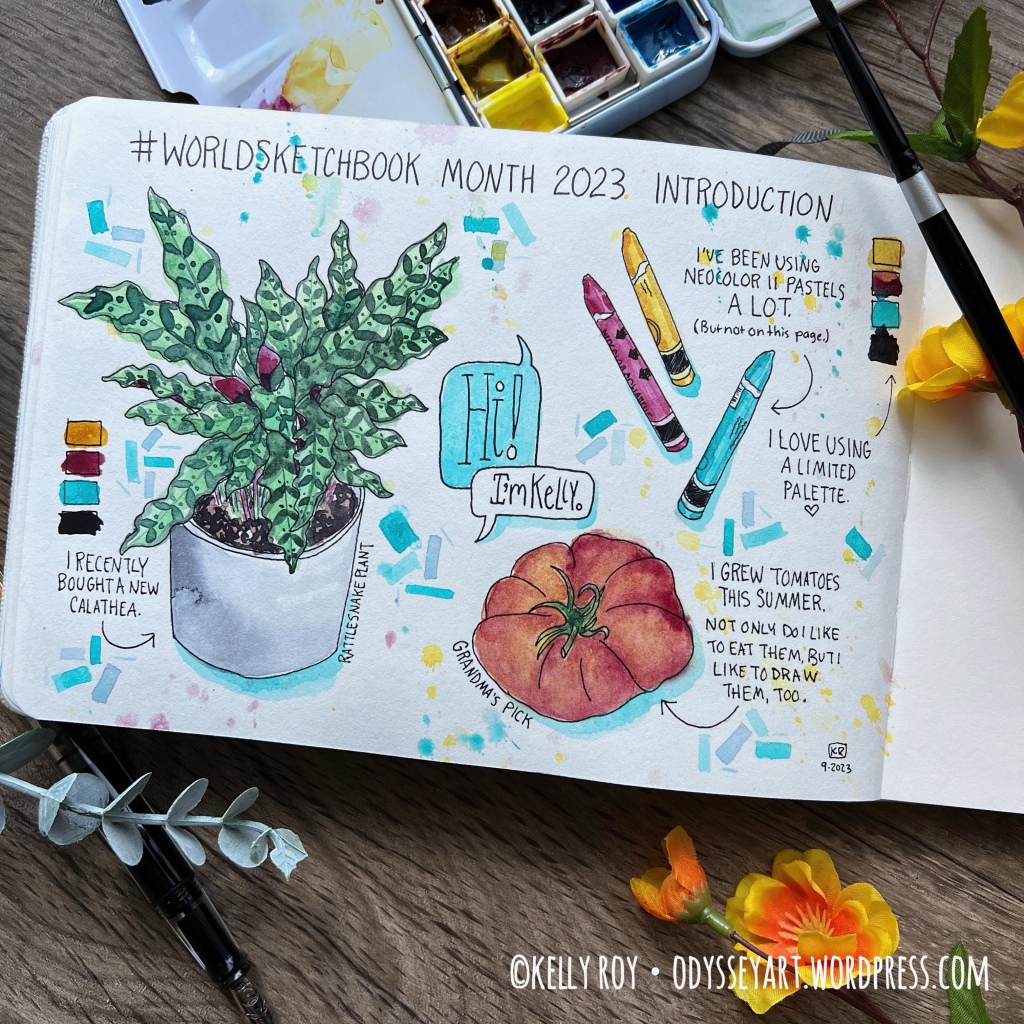
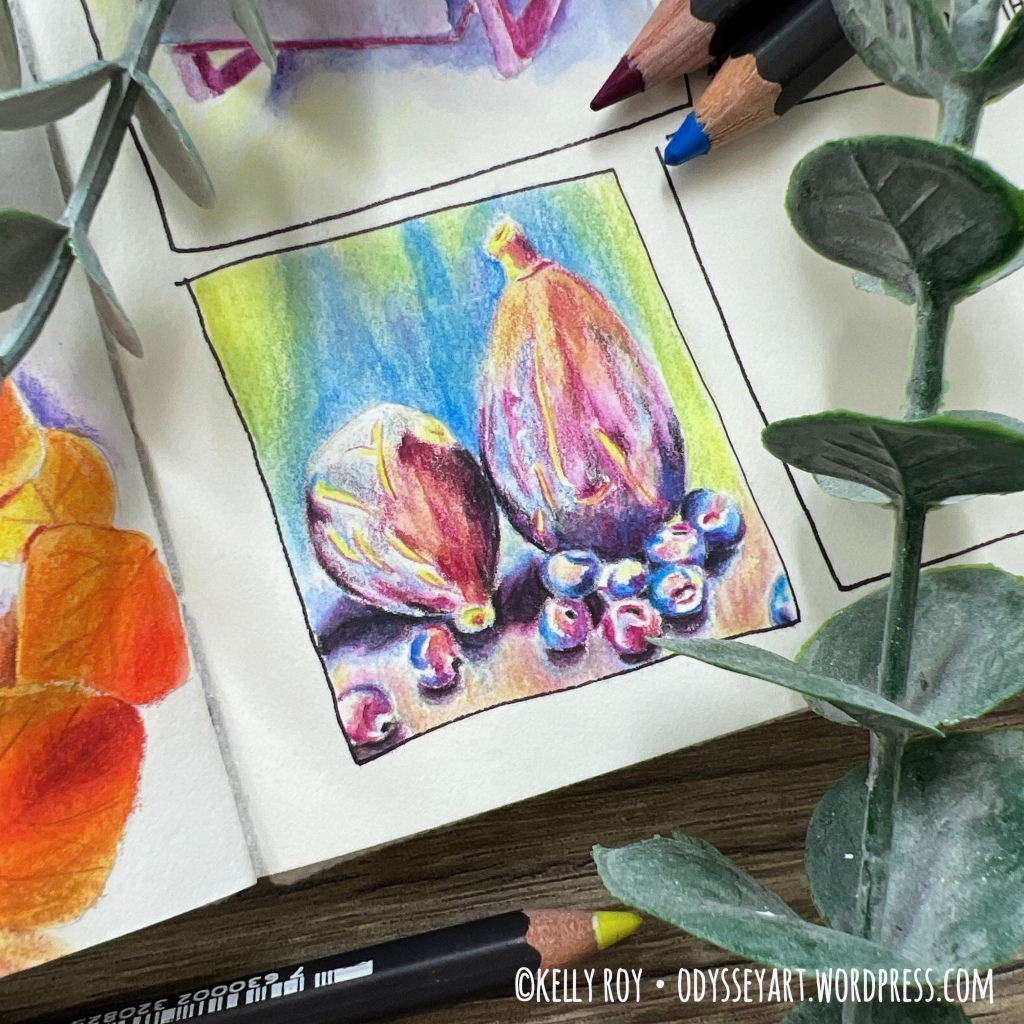
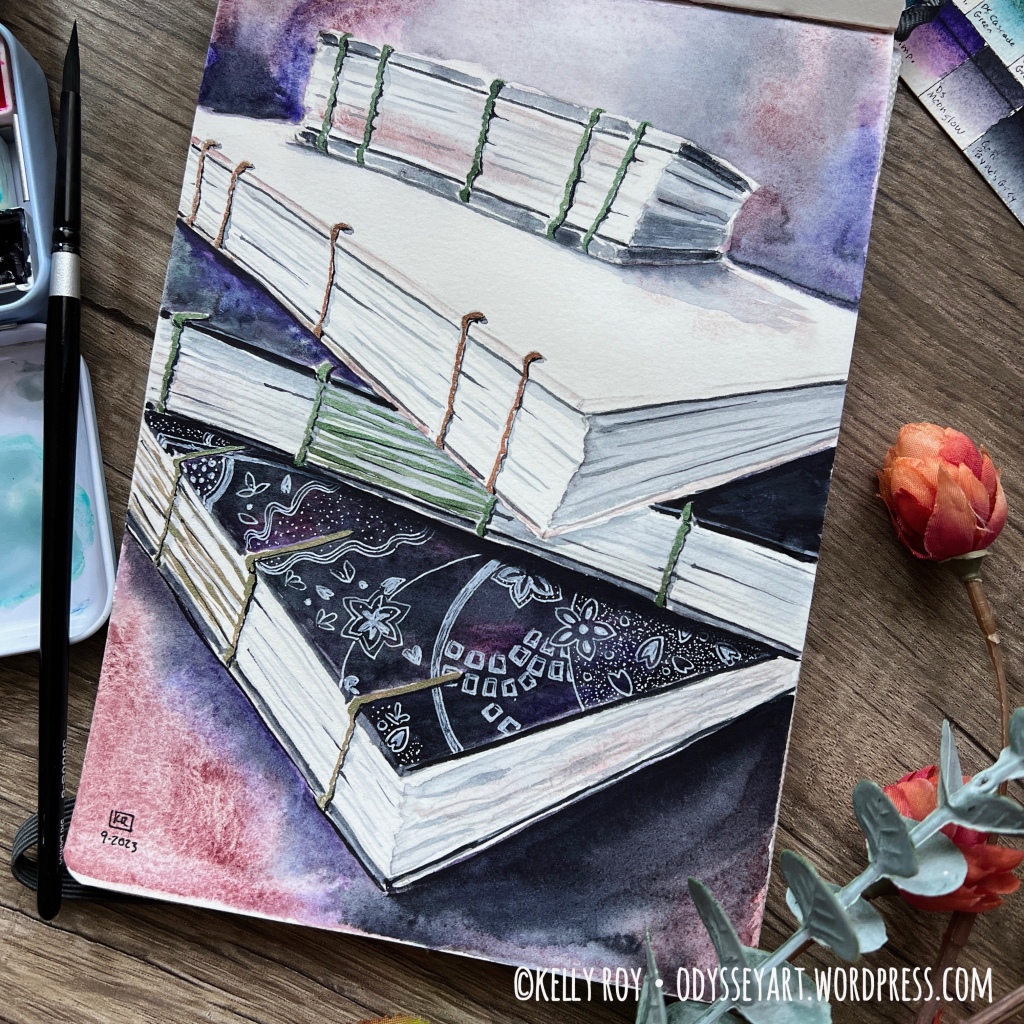


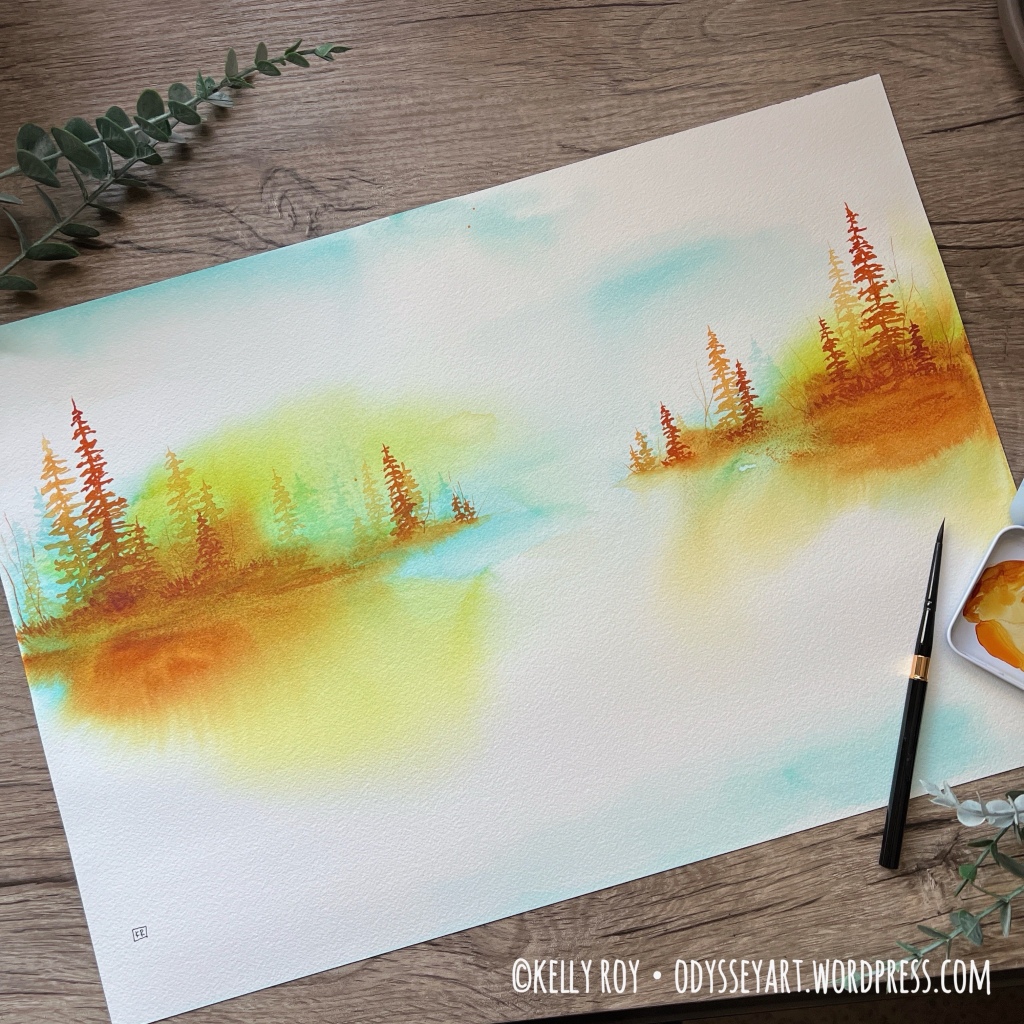
That said, I still felt a bit on the uninspired side, and maybe that’s really only because I just needed to give myself a bit of a break from constantly creating for probably the last nine or so months.
What I DID get out of this book were some valuable exercises on coming back to myself and giving myself the attention I need and deserve. This book guided me towards becoming more available to myself, not just emotionally, but also in just quality time spent with myself.
The Morning Pages and Artist’s Dates help with this, as well as a lot of her other weekly tasks she assigns at the end of each chapter. Identifying areas where we continually block ourselves, toxic relationships, etc.
This book is much more than just “get out a sketchbook and draw” or “sit down and write a new chapter every day”. In fact, it seems she spends little time on pressuring us to actually do specific creative exercises, but instead encourages us to be kinder and gentler to ourselves and clear out the obstacles we have in our lives that prevent us from pursuing our creative dreams.
I’m glad I finally picked this book up and gave it my full attention and participation. I do feel like I’ve grown in positive ways and that I’m a different person now than I was 12 weeks earlier.
I enjoyed the book and the exercises so much, I picked up her second book “Walking in this World” to continue the journey. I’m someone who seems to always require a project to be working on/towards. I’m looking forward to discovering more and more about myself and this beautiful world, and taking part in more purposeful activities that encourage me to take good care of myself, and, in the long run, support my creativity.

Have you read and done the work in “The Artist’s Way”? How long ago? Have you gone through it multiple times? What did you get out of it? Or have you heard of it but not been interested?
Share your experience in the comments below.
Thanks for dropping by and taking a few moments to read about this experience. I hope it clears up some misconceptions about this book and you feel encouraged to give it a try yourself. Who knows what will come up for you?
BOOKS MENTIONED IN THIS POST:
Contains affiliate links. See disclosure for more info.
“The Artist’s Way” by Julia Cameron
“Walking in this World” by Julia Cameron
“It’s Not Your Money” by Tosha Silver

I did read it, quite a few years ago now….and…..like you, there has been a LOT of very personal, water under my bridge, also! Mine has caused me to learn a LOT about creativity and mental health and although I forget a lot of what Julia has to say in her lovely book, I do think the whole deal about morning pages and finding our authentic selves is super important for the wellbeing of our creativity and our SELVES. I am currently engaged in reviving my art practice as part of my global endevour to regain both my mental and physical wellbeing. Best wishes to you in your creative endevours, Kelly – nothing is better for us, mind and body than spending time in a state of flow IMO!
LikeLiked by 1 person
Firstly, love the way you write about the experience of the book and also the images, so yummy!
I’ve gone through the book two or three times in the past, and always find something that I need or wanted to consider.
LikeLiked by 1 person